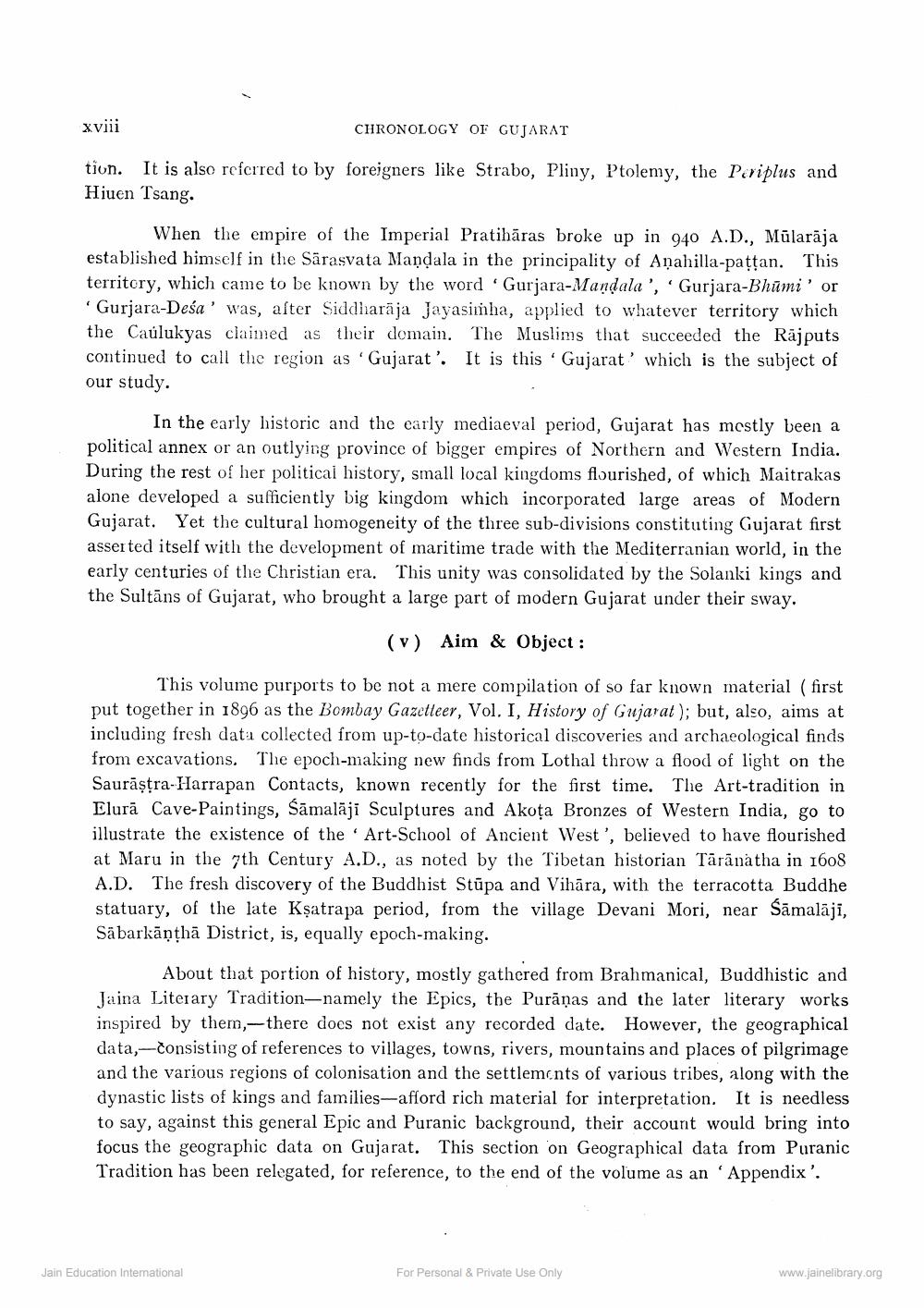________________
xviii
CHRONOLOGY OF GUJARAT
tion. It is also referred to by foreigners like Strabo, Pliny, Ptolemy, the Periplus and Hiuen Tsang.
When the empire of the Imperial Pratihāras broke up in 940 A.D., Mūlarāja established himself in the Sarasvata Mandala in the principality of Anahilla-pattan. This territory, which came to be known by the word 'Gurjara-Mandala', Gurjara-Bhūmi' or
Gurjara-Deśa' was, after Siddiarāja Jayasimha, applied to whatever territory which the Caulukyas claimed as their domain. The Muslims that succeeded the Rājputs continued to call the region as 'Gujarat'. It is this Gujarat' which is the subject of our study.
In the early historic and the early mediaeval period, Gujarat has mostly been a political annex or an outlying province of bigger empires of Northern and Western India. During the rest of her political history, small local kingdoms flourished, of which Maitrakas alone developed a sufficiently big kingdom which incorporated large areas of Modern Gujarat. Yet the cultural homogeneity of the three sub-divisions constituting Gujarat first asserted itself with the development of maritime trade with the Mediterranian world, in the early centuries of the Christian era. This unity was consolidated by the Solanki kings and the Sultāns of Gujarat, who brought a large part of modern Gujarat under their sway.
(v) Aim
& Object :
This volume purports to be not a mere compilation of so far known material (first put together in 1896 as the Bombay Gazetteer, Vol. I, History of Gujarat); but, also, aims at including fresh data collected from up-to-date historical discoveries and archaeological finds from excavations. The epoch-making new finds from Lothal throw a flood of light on the Saurāșțra-Harrapan Contacts, known recently for the first time. The Art-tradition in Elurā Cave-Paintings, Śāmalāji Sculptures and Akoța Bronzes of Western India, go to illustrate the existence of the 'Art-School of Ancient West', believed to have flourished at Maru in the 7th Century A.D., as noted by the Tibetan historian Tārānátha in 1608 A.D. The fresh discovery of the Buddhist Stūpa and Vihāra, with the terracotta Buddhe statuary, of the late Kșatrapa period, from the village Devani Mori, near Sāmalāji, Säbarkāņthā District, is, equally epoch-making.
About that portion of history, mostly gathered from Brahmanical, Buddhistic and Jaina Literary Tradition-namely the Epics, the Purāņas and the later literary works inspired by them,- there does not exist any recorded date. However, the geographical data, --consisting of references to villages, towns, rivers, mountains and places of pilgrimage and the various regions of colonisation and the settlements of various tribes, along with the dynastic lists of kings and families-afford rich material for interpretation. It is needless to say, against this general Epic and Puranic background, their account would bring into focus the geographic data on Gujarat. This section on Geographical data from Puranic Tradition has been relegated, for reference, to the end of the volume as an Appendix'.
Jain Education International
For Personal & Private Use Only
www.jainelibrary.org




